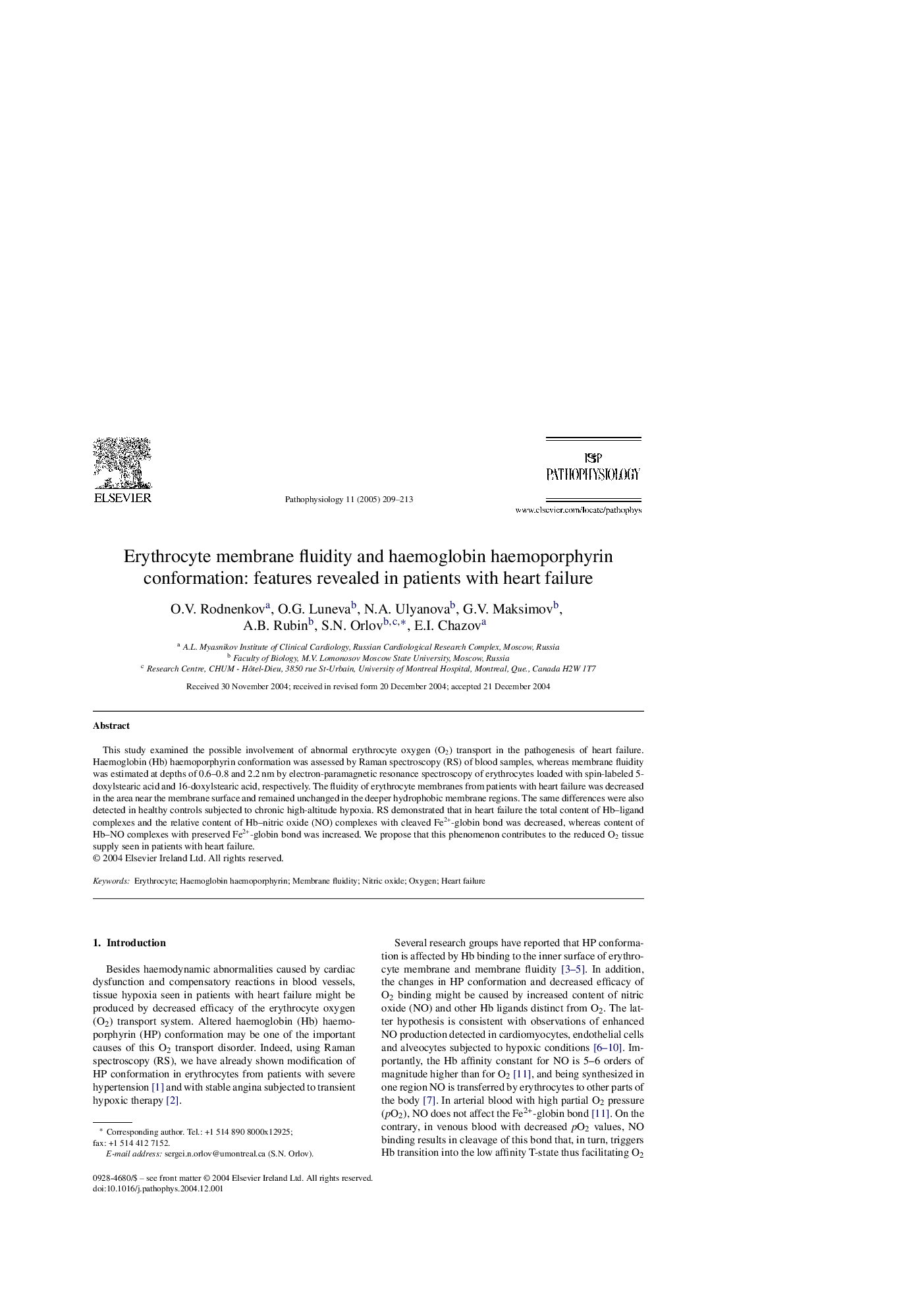| Article ID | Journal | Published Year | Pages | File Type |
|---|---|---|---|---|
| 9367313 | Pathophysiology | 2005 | 5 Pages |
Abstract
This study examined the possible involvement of abnormal erythrocyte oxygen (O2) transport in the pathogenesis of heart failure. Haemoglobin (Hb) haemoporphyrin conformation was assessed by Raman spectroscopy (RS) of blood samples, whereas membrane fluidity was estimated at depths of 0.6-0.8 and 2.2Â nm by electron-paramagnetic resonance spectroscopy of erythrocytes loaded with spin-labeled 5-doxylstearic acid and 16-doxylstearic acid, respectively. The fluidity of erythrocyte membranes from patients with heart failure was decreased in the area near the membrane surface and remained unchanged in the deeper hydrophobic membrane regions. The same differences were also detected in healthy controls subjected to chronic high-altitude hypoxia. RS demonstrated that in heart failure the total content of Hb-ligand complexes and the relative content of Hb-nitric oxide (NO) complexes with cleaved Fe2+-globin bond was decreased, whereas content of Hb-NO complexes with preserved Fe2+-globin bond was increased. We propose that this phenomenon contributes to the reduced O2 tissue supply seen in patients with heart failure.
Related Topics
Health Sciences
Medicine and Dentistry
Pathology and Medical Technology
Authors
O.V. Rodnenkov, O.G. Luneva, N.A. Ulyanova, G.V. Maksimov, A.B. Rubin, S.N. Orlov, E.I. Chazov,
